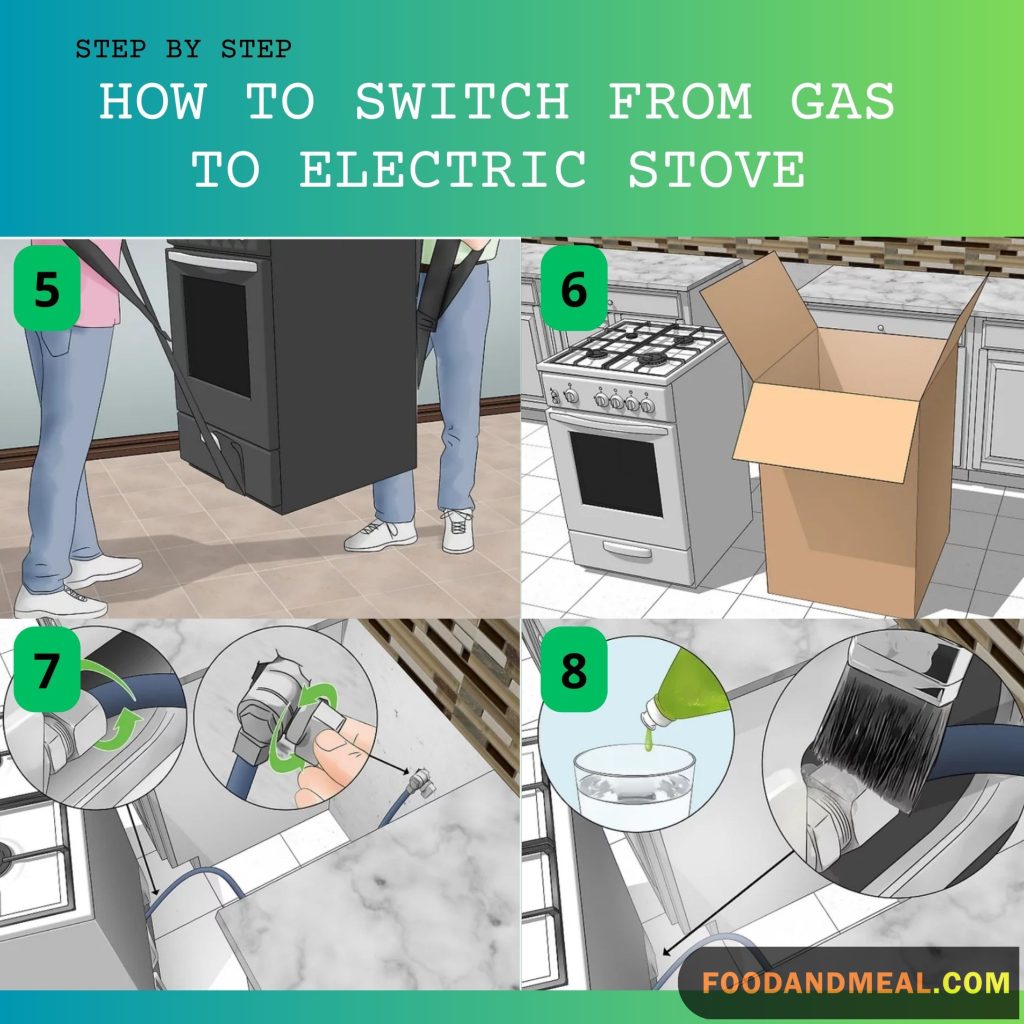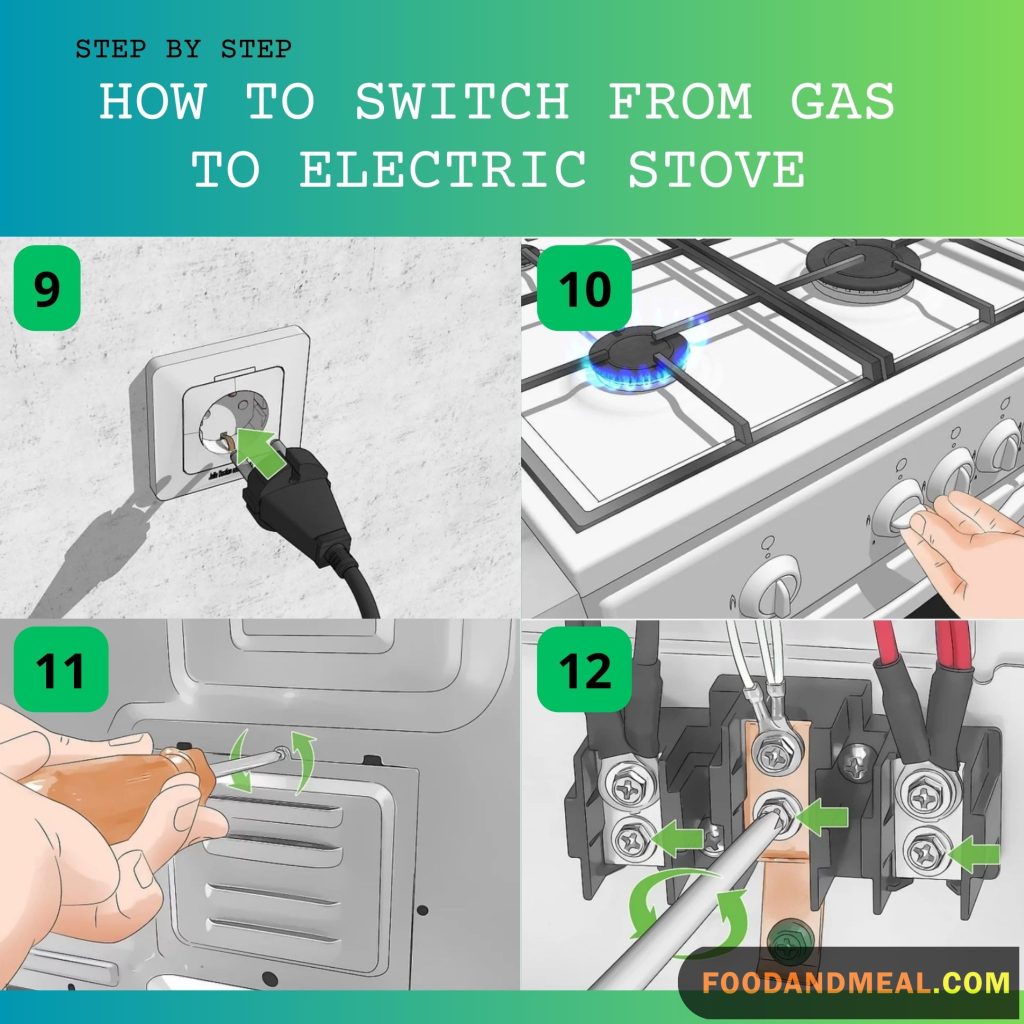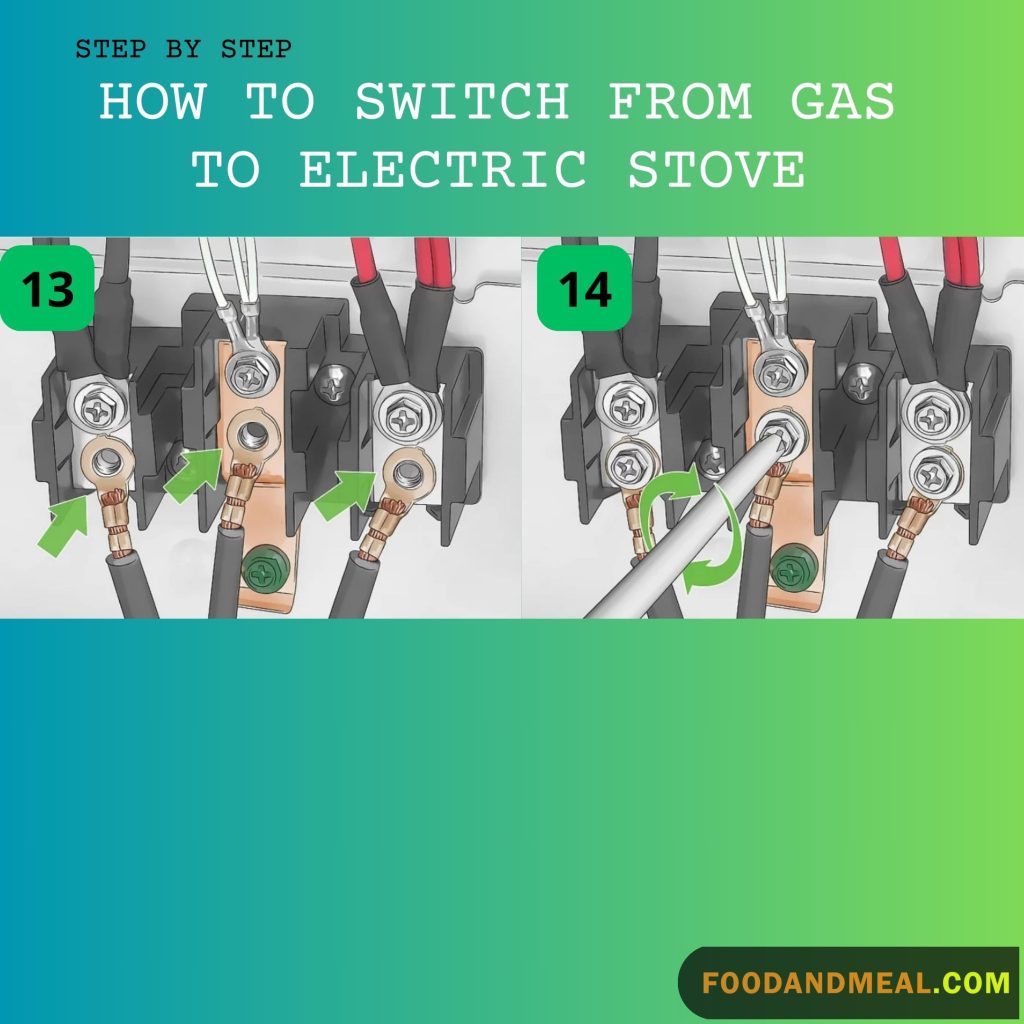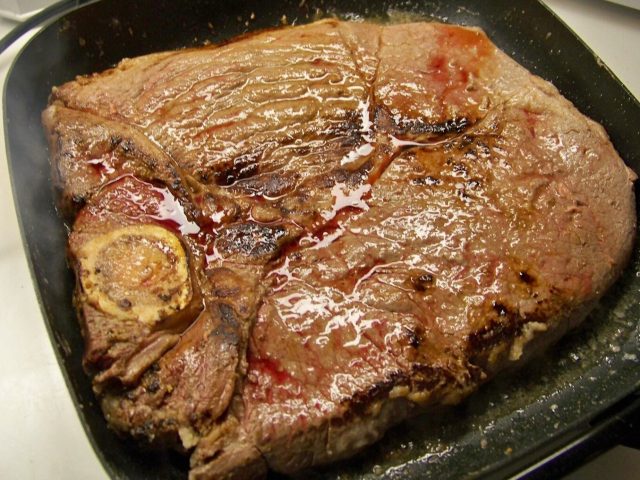Discover the ultimate guide to seamlessly transitioning from a gas stove to an electric one. Learn the step-by-step process and benefits of switching, ensuring a greener and more efficient cooking experience. Take the leap today!
Why Consider Switching from Gas to Electric Stove?
With concerns over climate change and air quality on the rise, many homeowners are considering making the switch from gas to electric appliances. Gas stoves in particular have come under scrutiny due to their emissions of nitrogen oxides, carbon monoxide, and other pollutants indoors.
Switching from a gas to an electric stove can help improve indoor air quality and reduce your carbon footprint. Gas stoves emit air pollutants even when turned off, whereas electric stoves produce no emissions. Going electric also allows you to source renewable energy through your utility or install solar panels.
In addition, gas prices have been volatile lately due to inflation and geopolitical factors. An electric stove eliminates dependence on natural gas and locks in a more predictable electricity rate.
With rebates, incentives, and competitive pricing for energy efficient electric models, now may be the perfect time to make the switch.
Benefits of Electric Stoves
Here are some of the top benefits of switching to an electric stove:
- Improved indoor air quality – no nitrogen oxides or carbon monoxide emissions
- Reduced carbon footprint – can source renewable electricity
- More energy efficient options – ENERGY STAR models available
- Precise temperature control – induction models heat and cool instantly
- Easier to clean – smooth glass tops with no gas burners
- Safer – no risk of gas leaks or open flames
- Quieter operation – no combustion noise
- Modern look – sleek glass tops and digital controls
Steps to Replacing Your Gas Stove with an Electric Stove
Here is a basic overview of the steps involved in replacing a gas stove with an electric model:
- Select an electric stove option that fits your needs
- Hire a contractor to disconnect and cap off gas lines
- Install a new circuit breaker and electrical wiring if needed
- Have the new electric stove delivered and installed
- Test operation of the stove and adjust settings
- Properly dispose of old gas stove
We’ll go over these steps in more detail throughout the guide. Key factors to consider include electrical requirements, installation needs, costs, and cooking preferences.
Types of Electric Stoves

There are three main types of electric stoves to choose from:
Electric Coil Stoves
Electric coil stoves use resistive coil heating elements under the cooktop surface to generate heat. They are the most affordable electric stove option, ranging from $300-$800.
Pros:
- Inexpensive purchase price
- Simple mechanical design
- Easy to repair and find replacement parts
Cons:
- Slow to heat up and cool down
- Hard to clean around coil elements
- Not as energy efficient
- Prone to burning out
- Less even heat distribution
Electric Smooth-top Stoves
Electric smooth-top stoves use electric heating elements under a smooth glass-ceramic cooktop surface. They range from $500-$1,200 in price.
Pros:
- Sleek appearance
- Easy to clean smooth top
- Precise temperature control
- Variety of element sizes
Cons:
- Pricier than coil stoves
- Glass top can be damaged
- Elements may cycle on and off
Induction Stoves

Induction stoves use electromagnetic coils below the glass surface to directly heat cookware, rather than heating the cooktop. They start around $1,200.
Pros:
- Most energy efficient
- Very fast heating and cool down
- Advanced safety features
- Easy to clean
- Precise temperature control
Cons:
- Most expensive option
- Require compatible cookware
- Noisy cooling fans
- Complex repairs if needed
And for those who are always on the move or have limited kitchen space, the Best Portable Induction Cooktops can be a game-changer. These compact powerhouses offer all the benefits of induction cooking in a convenient, portable package. Whether you’re in a dorm room, on a camping trip, or simply need an extra cooking surface, the Best Portable Induction Cooktops have got you covered. Click here to explore the top-rated options and find the perfect portable induction cooktop for your culinary adventures!
Factors to Consider Before Making the Switch
Here are some important factors to take into account before replacing your gas stove with an electric model:
Electrical Requirements
Most electric stoves require a dedicated 240-volt circuit with a capacity of 40 amps or more. A licensed electrician will need to install a new circuit breaker and wiring. Your home’s electrical panel must have room for the new breaker.
Induction stoves in particular may require 50 amps or more. Check the electrical requirements of models you’re considering.
Available Space and Installation
Make sure you have adequate space for the new electric stove, which may have slightly different dimensions. Electric stoves can be plugged in or hard wired.
Installation may require adjustments to countertops, cabinets, gas lines, and electrical. Hire experienced appliance installers if you don’t want to tackle this yourself.
Budget and Cost Comparison
Upfront costs for an electric stove start around $300, with pro installation from $200-$500. High-end induction models can cost $2,000 or more. There may also be costs for electrical work.
Over time, using an energy efficient electric stove is often cheaper than gas. Compare energy rates and factor in potential rebates and incentives.
Cooking Preferences
Consider how your cooking style matches up with electric stove options. Induction offers the fastest heating and control. Coil stoves may suit those wanting a basic, inexpensive option. Smooth tops offer flexibility.
You’ll need cookware compatible with induction if choosing that route. Test different models in person if possible.
Steps to Replace Your Gas Stove with an Electric Stove
Once you’ve selected the right electric stove model and prepared your kitchen for the switch, here are the basic installation steps:

Replacing a gas stove with an electric one involves several steps. First, you need to carefully slide the oven away from the wall, ensuring not to yank or jerk it. Open the oven door and get a good grip on the upper lip to pull it away from the wall. This will allow you to access the wiring and lines at the back of the stove.
Next, unplug the stove and shut off the gas valve if it has one. Reach behind the stove and pull the plug out from the wall outlet. If your stove is gas-powered, locate the gas line on the wall and turn the valve to the right to shut off the gas supply. It’s crucial to ensure that the gas supply valve is fully shut off to prevent any gas leaks while you’re working.

If you have a gas stove, use a wrench to disconnect the gas line from the stove. Locate where the gas line connects to the back of your stove, clamp the connector with a wrench, and turn it counterclockwise to loosen and disconnect it. Leave the gas line nearby so you can reconnect it to your new stove.
Once your stove is disconnected, you can pull it out completely and dispose of it. Appliances like stoves need to be properly disposed of. You can search for recycling centers near you that accept stoves or contact a junk removal company that will come to your home to pick it up.

Now, it’s time to install your new electric stove. Find your stove’s access panel on the backside, usually located on the bottom corner or in the center. Use a screwdriver to remove the screw holding the panel in place so you can access it. In the access panel, look for the three terminal blocks. Find the lower screws and use your screwdriver to remove them so you can connect your leads (the ends of your wires).
Snake your stove wire beneath the stove and up into the access panel. Position the leads so they’re in line with the terminal block. Make sure your wire isn’t bunched up or stretched too tight. Attach the center wire to the center terminal so your neutral is connected. Then, place the remaining leads to the remaining terminal blocks. Replace and tighten the screws to hold the wires in place.

Finally, plug the stove into the wall outlet and slide it into place. Take the stove’s plug and connect it firmly to the wall outlet to supply power to it. Then, gently slide the stove into place so it fits nice and neat. Turn on the stove to make sure it’s working. Check the clock and electronics to make sure the stove has power. If the stove is working, you’re all set!
Pros and Cons of Electric Stoves
Here is a recap of some of the key pros and cons to weigh when deciding between an electric or gas stove:
Pros of Electric Stoves
- Better for indoor air quality
- Lower carbon footprint
- Precise digital temperature control
- Safer with no open flames
- Easier to clean smooth glass tops
- More energy efficient models available
- Quieter operation
Cons of Electric Stoves
- May require electrical upgrades
- Higher upfront costs
- Slower heating times on coil models
- Pans may heat unevenly on coils
- Limited color options
- Learning curve for induction cooking
Conclusion
Switching from gas to an electric stove is a major kitchen appliance upgrade requiring careful planning. But it can provide significant benefits like improved indoor air quality, lower emissions, and greater safety.
Modern electric stoves offer digital precision cooking with induction models heating up in seconds. And energy efficient options help offset higher purchase prices over time.
Just be sure to evaluate your electrical needs, installation requirements, costs, and cooking preferences before selecting a new electric range. With some smart preparation, you can make a smooth transition that will serve your household for years to come. And if you’re wondering, “Can induction cookware be used on an electric stove?” the answer is yes! Many induction cookware sets are versatile enough to be compatible with both induction and traditional electric stovetops, giving you the flexibility to cook with precision across different heat sources. Click here to find out more about how you can maximize your cookware’s potential with an electric stove.







